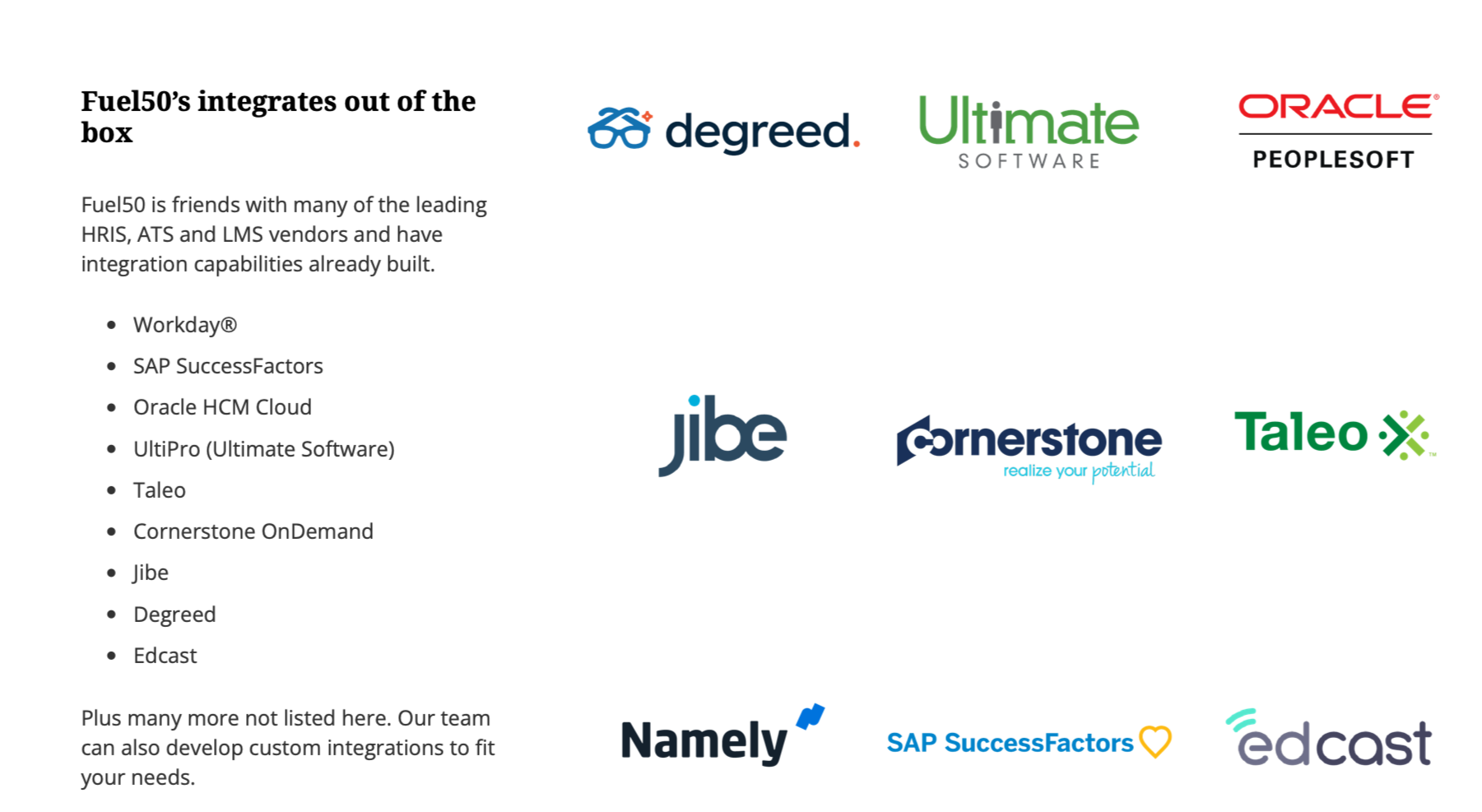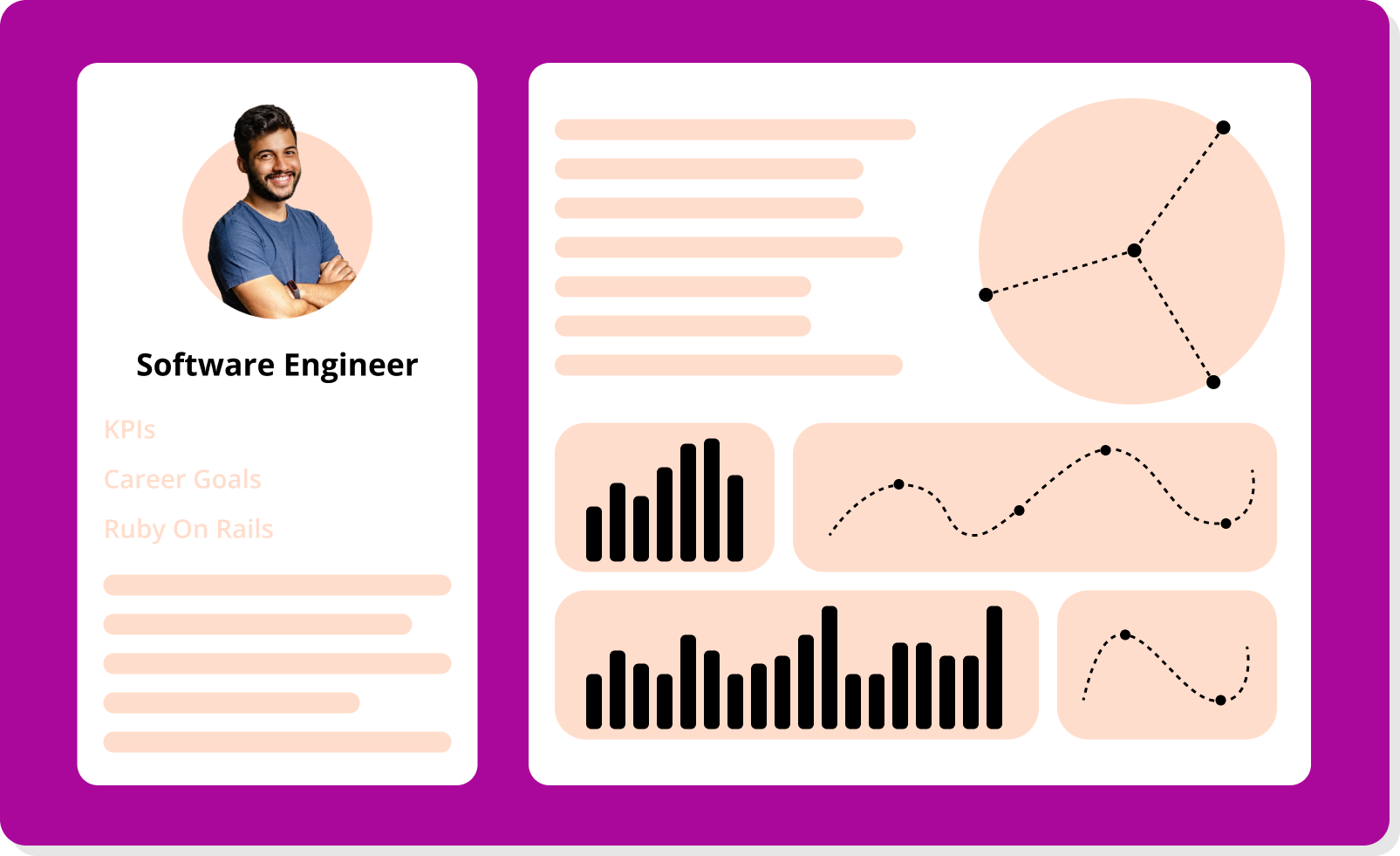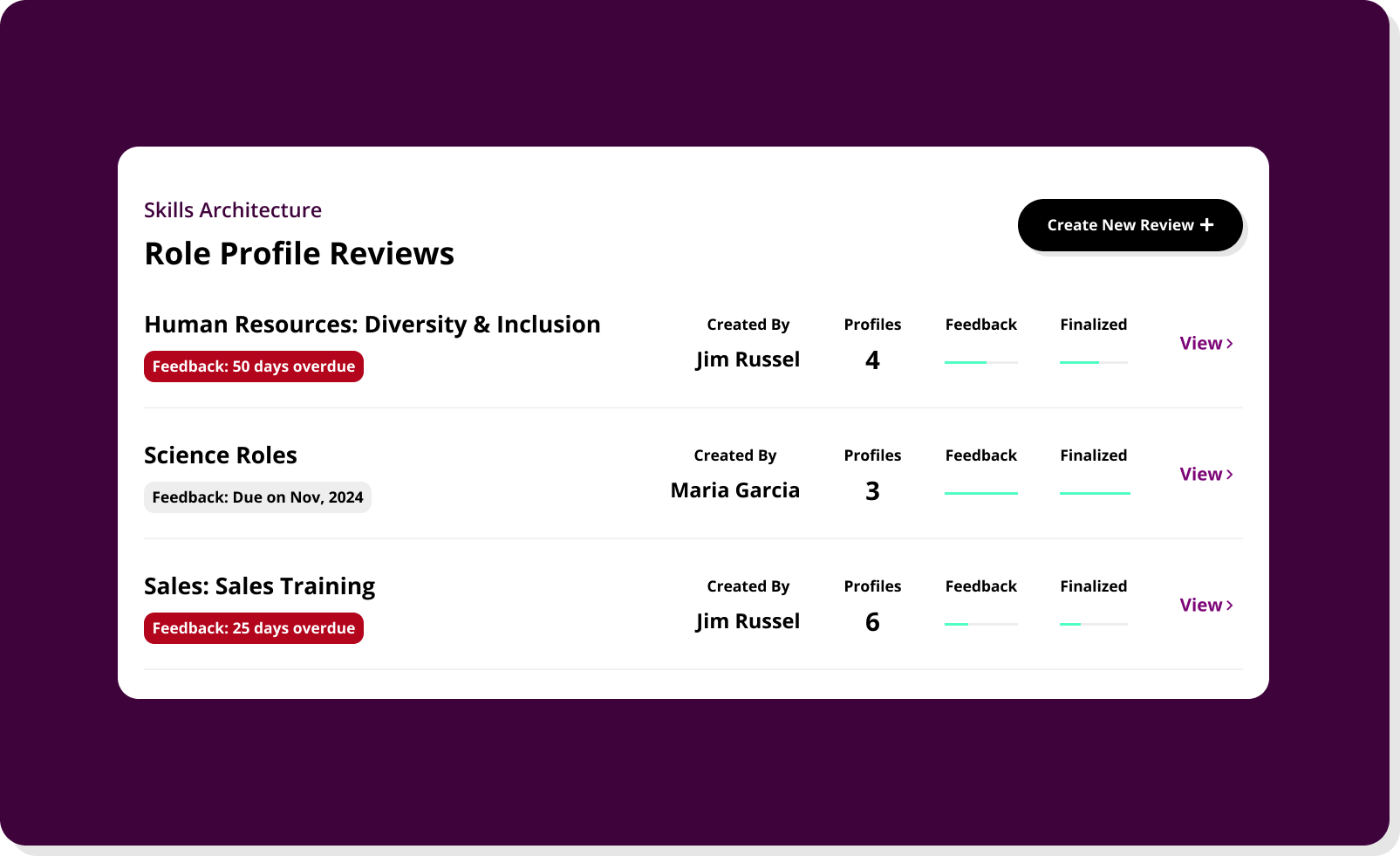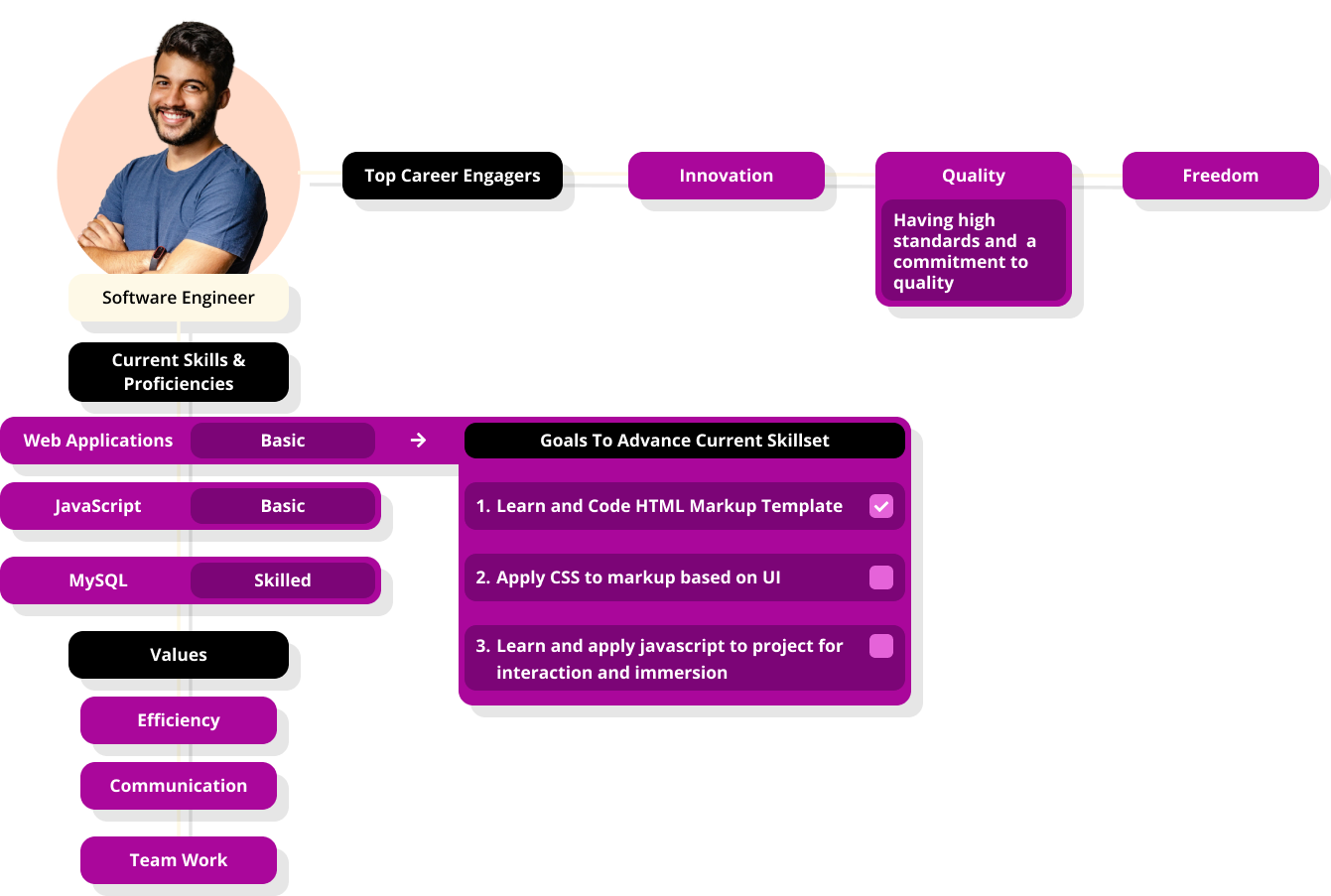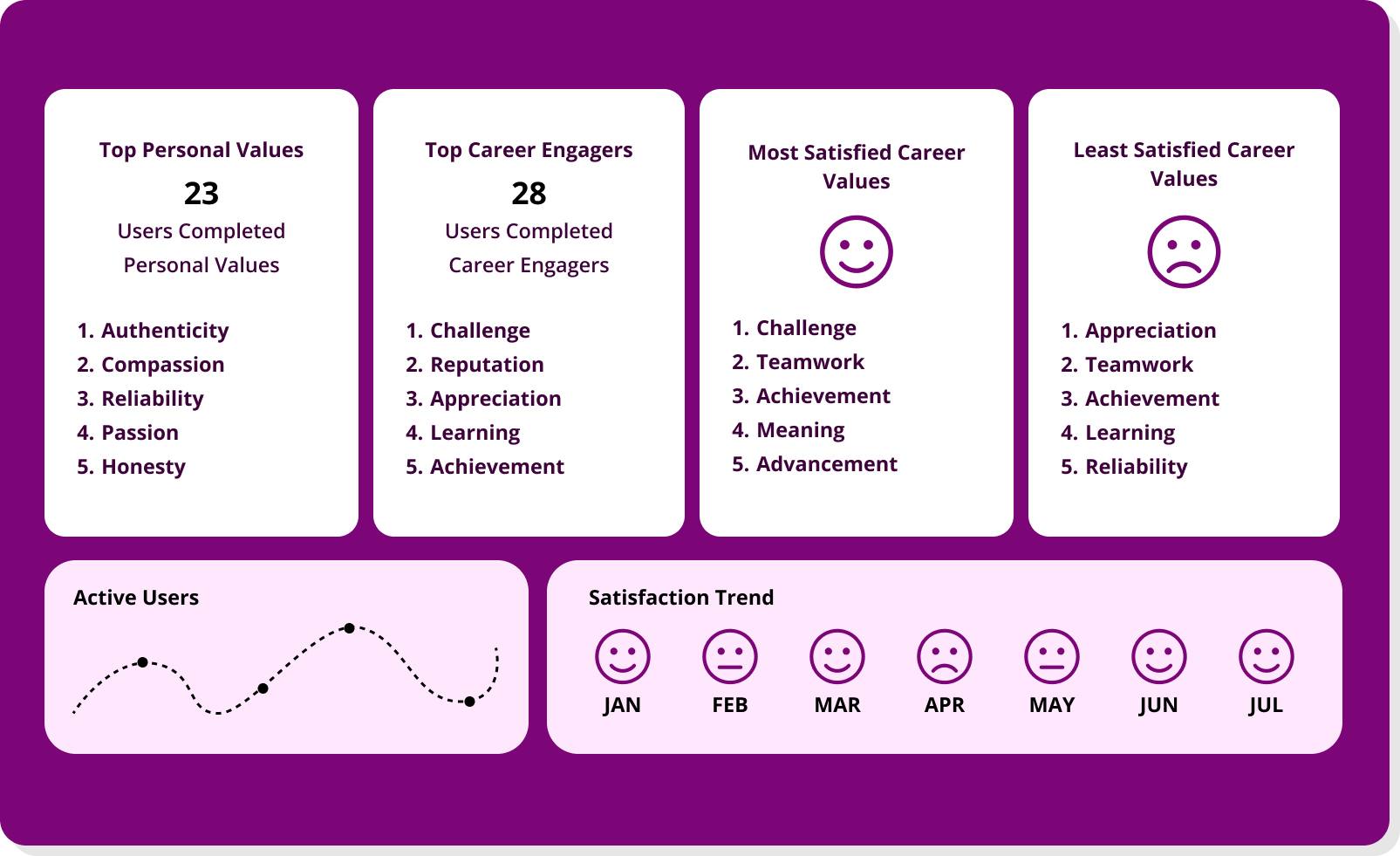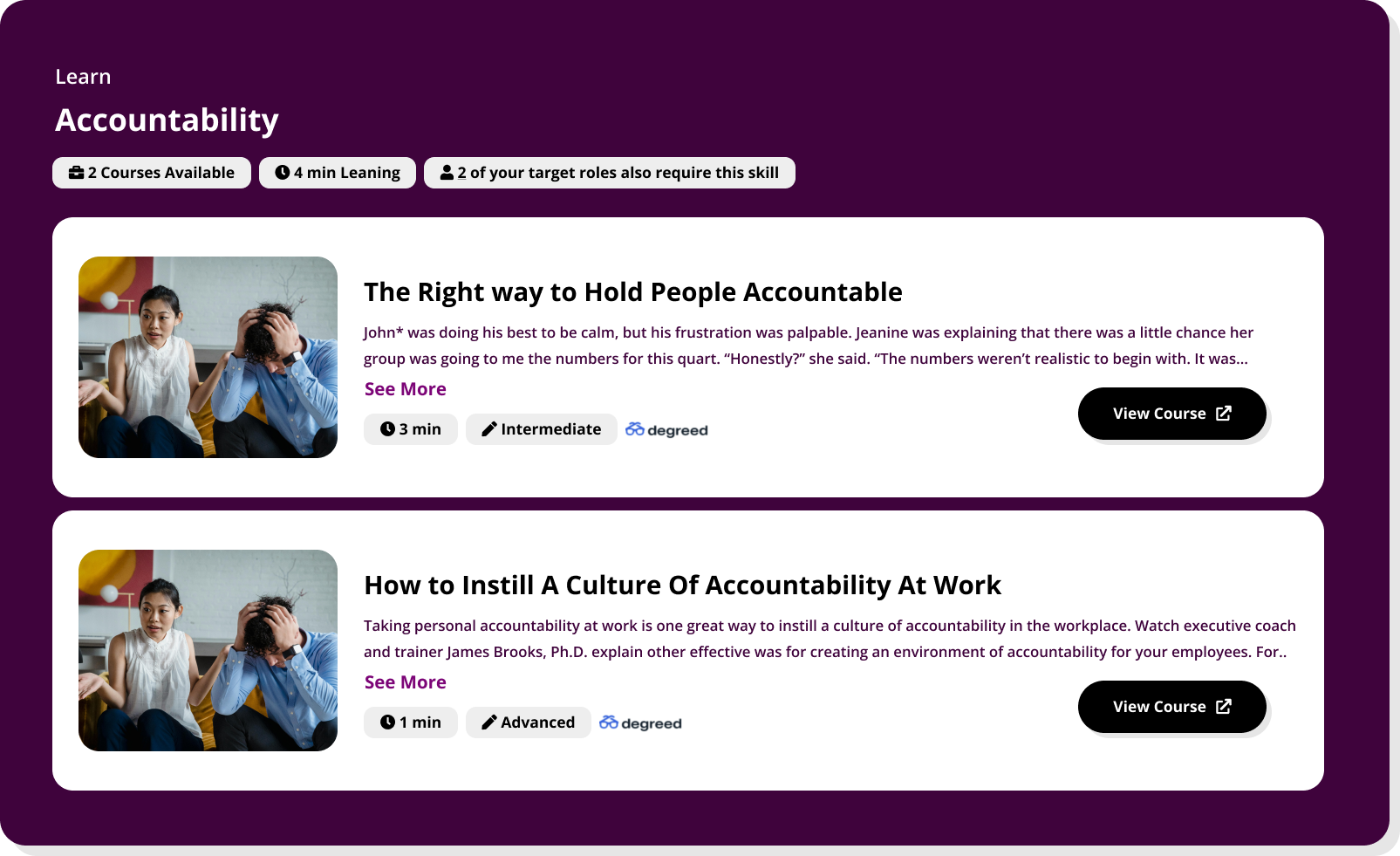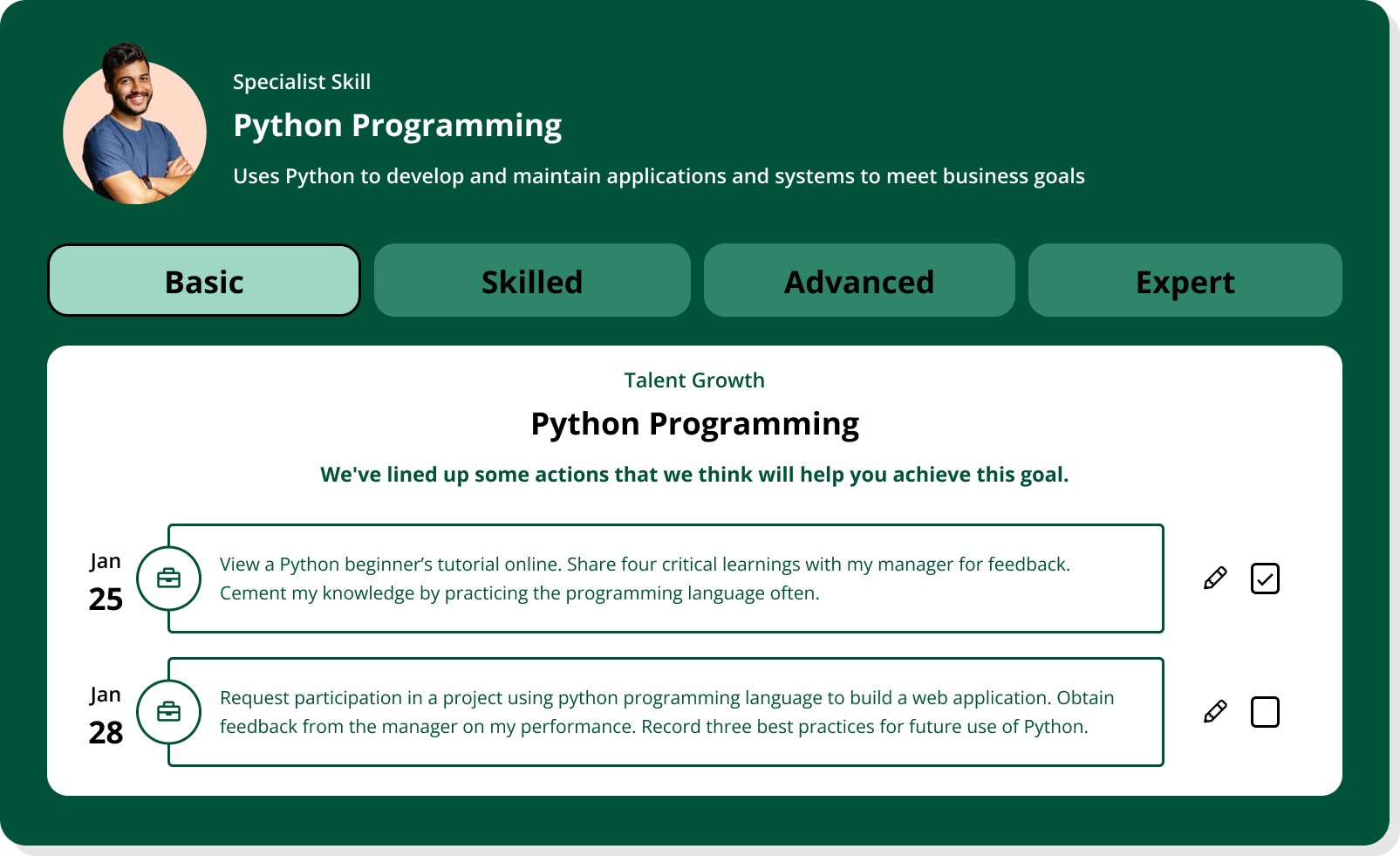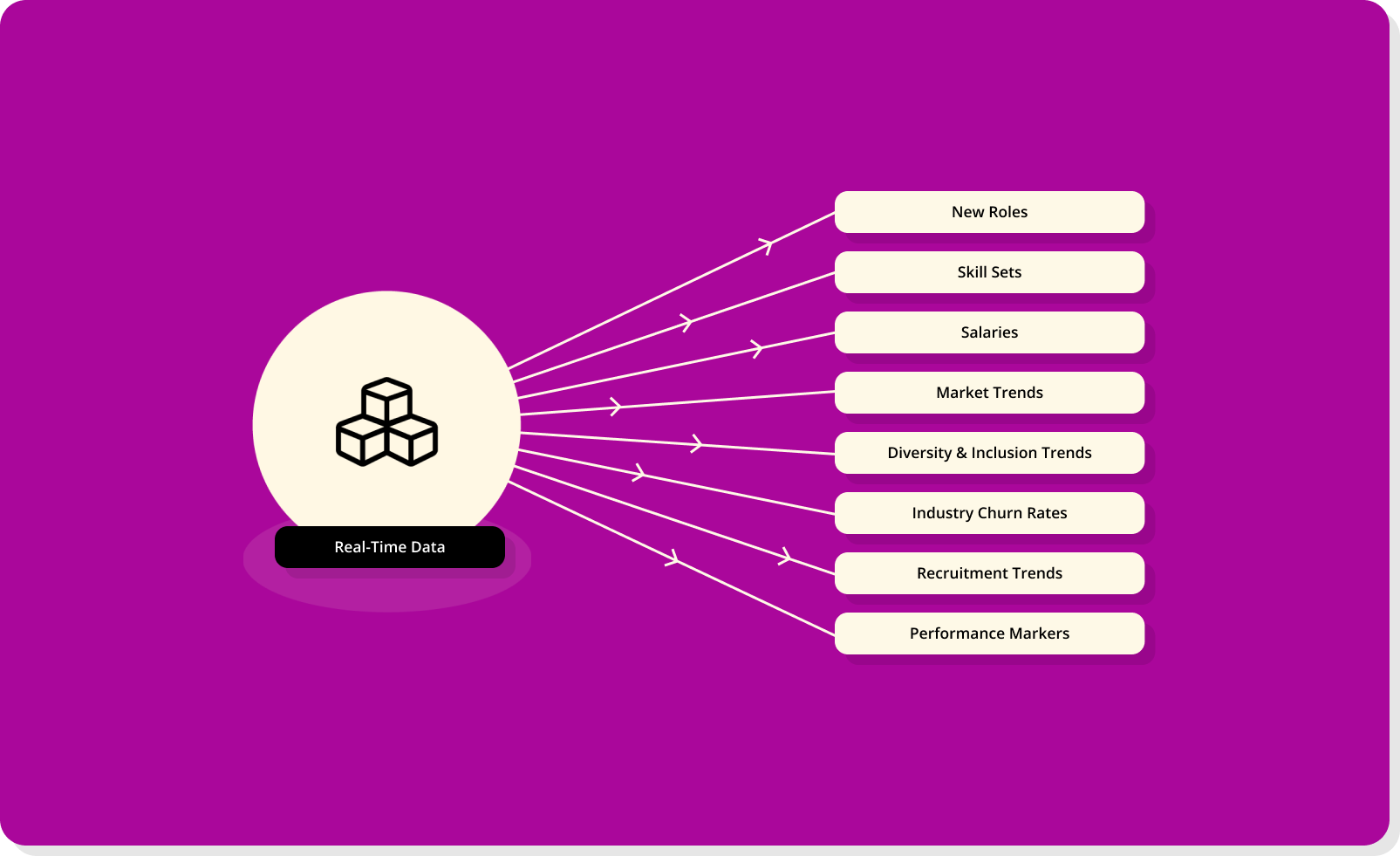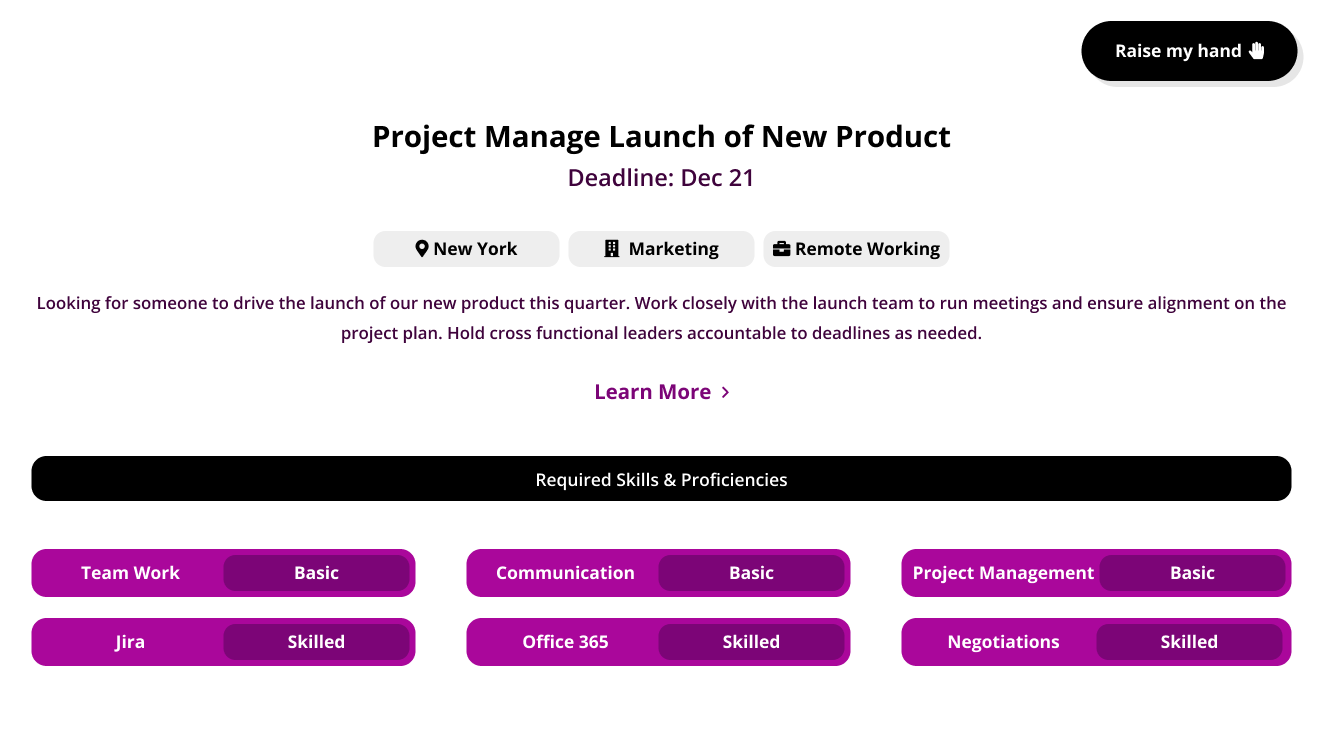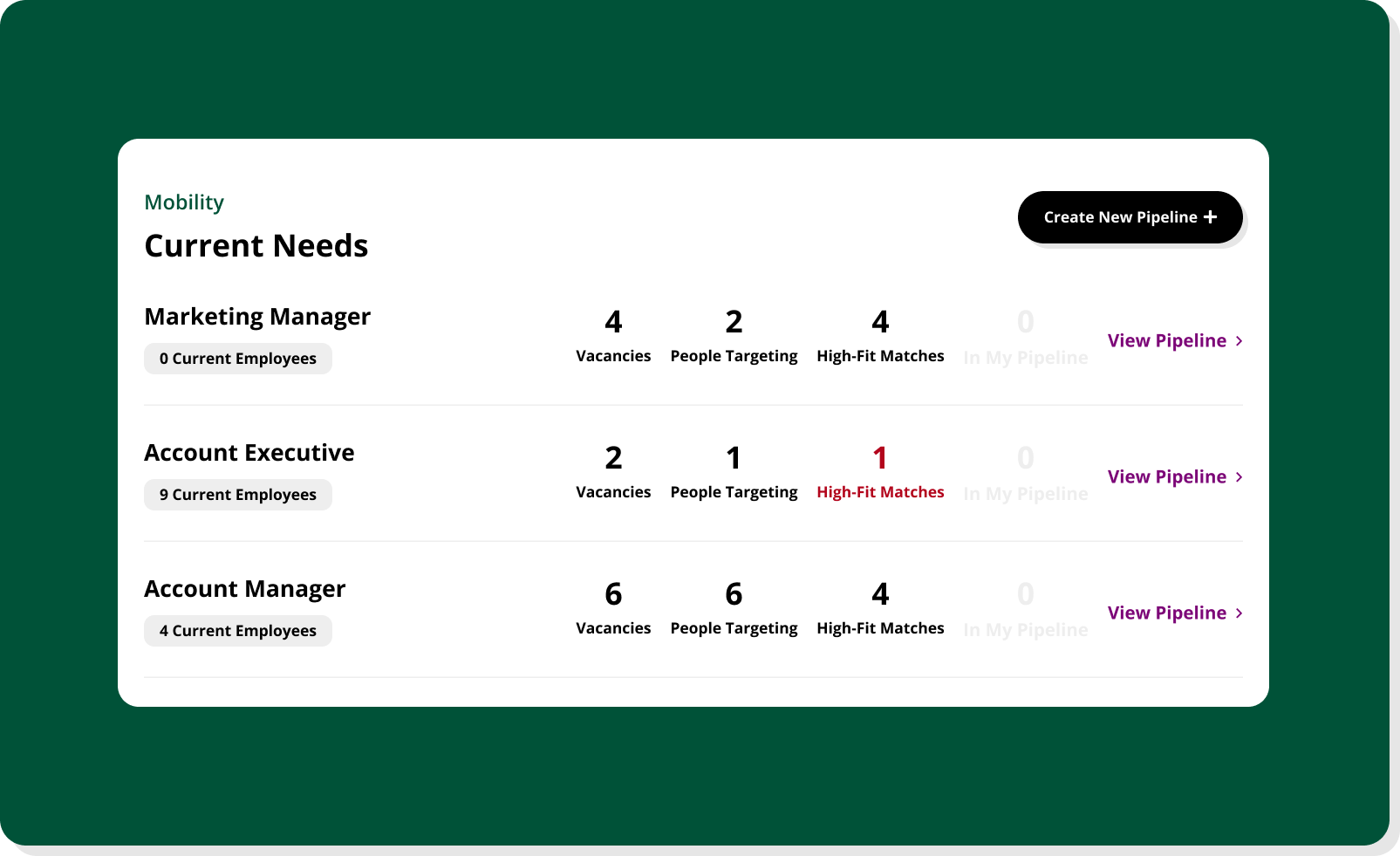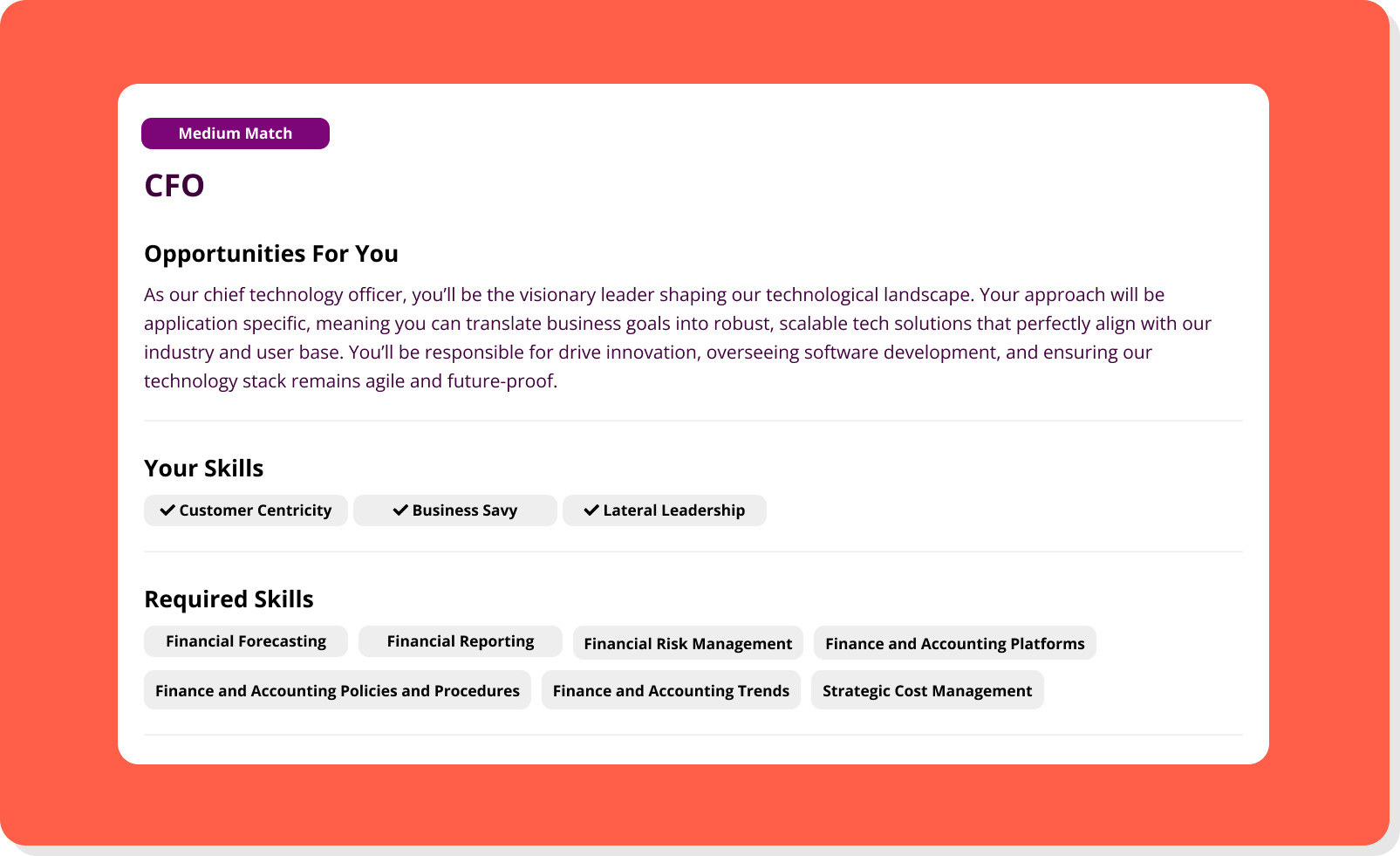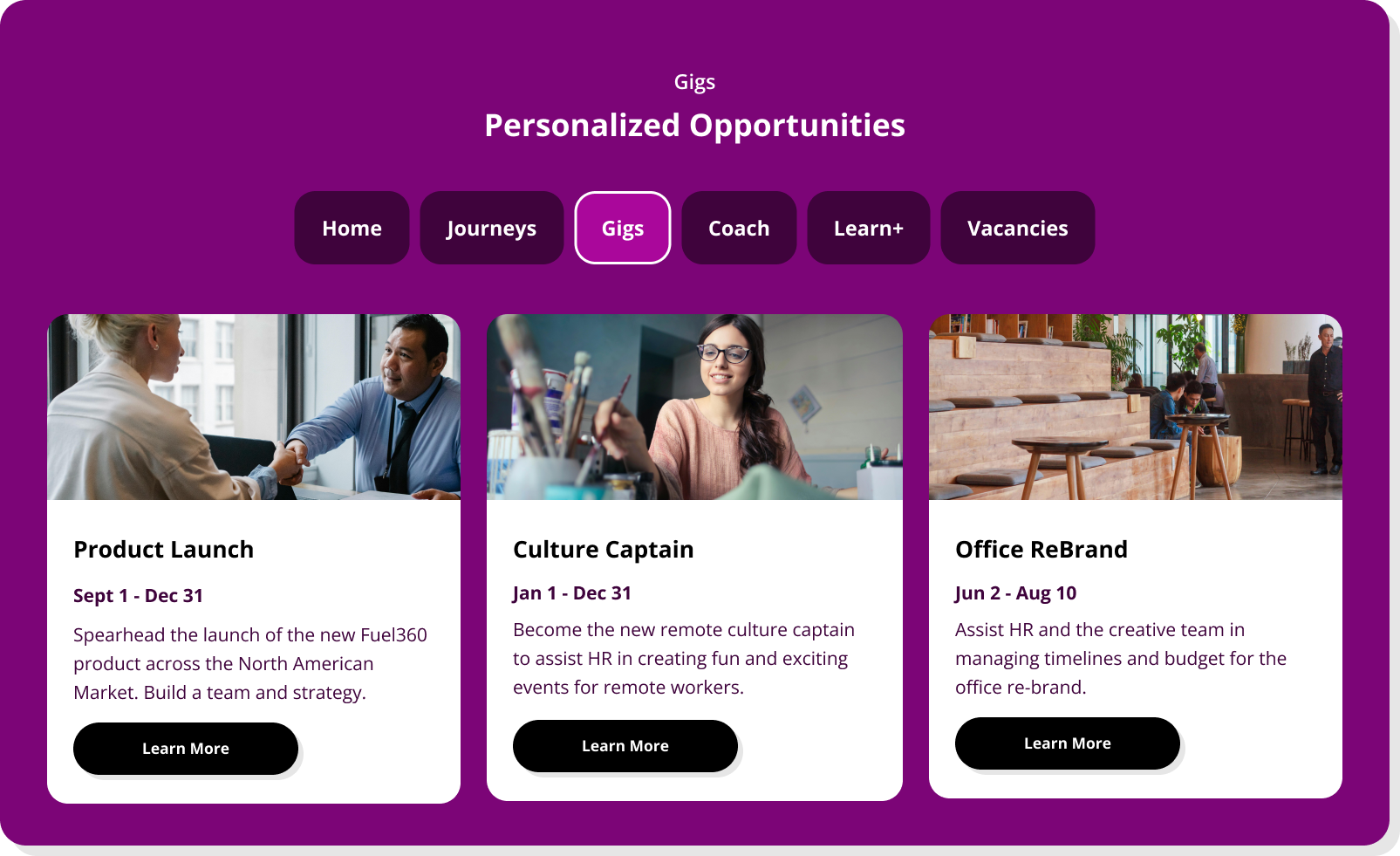Every enterprise HR team is sitting on a mountain of talent data: job histories in the HRIS, course completions in the LMS, applications in the ATS, engagement scores, performance ratings, career interests, etc.
Yet, none of it is working together—and certainly not fueling a coherent, skills-based talent strategy.
So when the business asks:
- “Where are our emerging leaders?”
- “What critical skills are we short on?”
- “Can we backfill this role internally?”
Most HR teams still don’t have a confident answer. They’re forced to piece together spreadsheets, static dashboards, and point-in-time assessments that don’t reflect the pace or complexity of workforce change.
The tools exist, the data is there but the connective tissue—the intelligence layer that turns fragmented HR systems into actionable insight—is missing.
This is the real blocker to talent agility and it’s why most internal mobility programs stall out before they start, why skills-based planning feels aspirational at best, and why engagement drops as employees look elsewhere for growth.
In this article, we’ll break down:
- Why disconnected HR tech stacks are holding back workforce strategy
- The limitations of standalone dashboards and skills libraries
- And how Fuel50 helps leading enterprises cut through the noise with their latest research, trends and insights to build a unified, skills-based experience—for employees, managers, and talent leaders alike
The problem with current HR tech within companies
The typical enterprise HR function is running on five or more systems, each designed to solve a different slice of the talent lifecycle. These tools—while individually useful—were never built to work as a cohesive whole. The result is a fragmented ecosystem where no single source of truth exists.
This fragmentation shows up in real business problems: succession planning lacks depth, internal candidates are overlooked, talent reviews become data-wrangling exercises, employees disengage because growth feels invisible, and HR teams spend more time hunting for answers than driving strategy.
The tech is there, but the orchestration is missing.
Your systems don’t talk to each other
Most enterprise HR systems were never designed to work together. They were purchased to solve individual problems at different points in time—often by different stakeholders, with different priorities. The ATS handles candidate flow. The HRIS manages employee records. The LMS tracks learning modules. A performance tool might run 360 reviews, while a separate system captures engagement surveys. Each of these platforms operates on its own underlying logic and data structure, with little regard for interoperability.
This lack of architectural integration creates friction at every level of talent management. Data must be exported, restructured, and manually interpreted before it becomes even marginally useful. For example, a business unit leader may ask HR to identify internal candidates for a stretch assignment. The ATS might contain relevant resume data, while the HRIS includes job histories and the LMS shows completed leadership courses. Yet because these systems do not communicate natively, answering that request often requires HR to build a spreadsheet from scratch—cross-referencing multiple platforms just to compile a list of possible names.
The real issue is not simply that the data is siloed. The underlying logic is fragmented. One system may define a “role” by job title, while another uses a competency model. One may structure skills as predefined checklists, while another allows open-ended inputs. Even fundamental concepts like “readiness” or “potential” are calculated differently—or not at all—depending on the system. This inconsistency undermines the very foundation of strategic workforce planning.
In practice, this means HR cannot move at the speed of the business. When senior leaders request insights—whether for succession planning, reorgs, workforce planning, or mobility strategy—HR teams are left scrambling for answers. They are not blocked by a lack of effort or expertise. They are blocked by architecture.
Until there is a unifying intelligence layer across the HR tech stack, the full picture of your workforce will remain fragmented. HR will continue operating reactively, not strategically. The systems will keep functioning. The data will keep accumulating. Yet the insight—the part that enables better decisions—will never materialize.
Managers and HR are still making decisions in the dark
In theory, managers and HR business partners are expected to serve as strategic stewards of talent. They are asked to identify high-potential employees, plan succession for key roles, and align development plans to long-term business needs. In practice, they are often forced to make those decisions based on instinct, anecdote, or legacy knowledge—because the systems intended to support them are not equipped to deliver real intelligence.
Workforce planning still takes place in spreadsheets built manually by HR analysts. Talent reviews rely on manager intuition and subjective ratings. Succession planning sessions involve color-coded grids and back-of-the-napkin assessments that have not changed in years. The entire process remains rooted in assumptions rather than insight.
When a business unit leader asks, “Who is ready to step into this role if it opens next quarter?,” the answer should come from data. Instead, it often comes from memory. Managers recommend the people they know best. HR tries to triangulate from performance scores and completion rates. The output may look like a plan, but it lacks the precision and rigor needed to execute.
The cost of these gaps shows up everywhere. Promotions are delayed or misallocated. External hiring becomes the default strategy. Internal mobility loses credibility because employees see that decisions are not grounded in capability or potential.
Strategic talent decisions cannot be left to chance. Without systems that surface real-time readiness, quantify skill gaps, and track development progress, organizations will continue to plan backwards—reacting to vacancies rather than preparing for growth.
Employees do not see a future inside your organization
The downstream impact of disconnected HR systems is not limited to the leadership level. Employees feel it every day in the form of career stagnation, limited visibility, and missed opportunities for growth. A motivated employee may complete dozens of training modules, volunteer for cross-functional projects, and express interest in advancement. Yet unless their efforts are captured, contextualized, and matched to internal opportunities, none of it translates into upward momentum.
In many organizations, employees log into a learning system only to find a generic list of courses with no indication of which ones matter for their career goals. They may express interest in a promotion during a performance review, but their manager has no access to a structured view of readiness or next steps. Gigs and stretch assignments often circulate informally—passed from one known quantity to another—while capable and interested employees are left out simply because they were not visible.
This experience sends a powerful message, whether intended or not: career growth depends less on capability and more on relationships, visibility, and guesswork. For high performers, that message becomes a trigger. Once they realize that internal growth is unstructured and unpredictable, they start exploring external options where advancement feels more meritocratic.
The result is not just disengagement; it is attrition, loss of institutional knowledge, and a missed opportunity to fill roles from within, where the cultural fit, ramp time, and performance risk are already known.
How Fuel50 solves this and gives you the insights you need
Fuel50 is not a system replacement. It is a strategic overlay that connects your existing HR technology stack and activates the intelligence trapped within it. Instead of asking your team to rip and replace systems that are already deeply embedded in your organization, Fuel50 works alongside them—bridging the data gaps, aligning frameworks, and enabling a unified, skills-based view of your workforce.
By creating dynamic, continuously evolving skills profiles for every employee, Fuel50 brings context to your talent data. That context powers real-time insight into skill supply, readiness, development needs, and internal mobility potential. The result is not just better information. It is faster, more confident decision-making—across HR, business leaders, and employees themselves.
Fuel50 integrates with your HR tools to centralize your talent data
Fuel50 connects directly to the core systems most enterprises already rely on—including Workday, SAP SuccessFactors, Oracle, Cornerstone, and other industry-standard platforms. These integrations are designed to be lightweight, secure, and non-disruptive, making it possible to bring your workforce data together without triggering a full-scale system overhaul. To learn more or discuss your integration needs, contact Fuel50.
The integration layer centralizes key employee data across systems—roles, job history, learning progress, performance metrics, career aspirations—and structures it into a unified talent framework. Once that data is harmonized, it becomes the foundation for actionable insights across the employee lifecycle.
Instead of managing fragmented data across five or more platforms, HR teams gain a consolidated view that updates dynamically and reflects the current state of the workforce. This is what makes strategic initiatives—such as workforce planning, succession mapping, and skills-based development—both operationally possible and scalable.
AI-powered skills profiles give you a living view of your workforce
Most systems capture skills as a static record—often based on a one-time self-assessment or outdated job description. Fuel50 takes a fundamentally different approach. Every employee’s profile becomes a living, dynamic source of truth that evolves over time, reflecting not just their role, but their actual work, development, and ambition.
Each profile is continuously enriched by real activity. When an employee completes a learning program, participates in a gig, receives manager feedback, or updates their aspirations, that data flows into the skills profile automatically. The result is not a resume. It is a current, contextualized view of capability and potential—aligned to real business needs.
These profiles power career pathing, succession planning, and development decisions with far more accuracy. Managers no longer have to rely on anecdotal input to gauge readiness. HR no longer has to guess at emerging talent. Fuel50 surfaces what each employee is building toward and what they need to get there—turning data into direction.
Built-in ontology makes skills data meaningful
Collecting skill data is one thing. Making sense of it across a global workforce is another. Fuel50 solves this by applying a proprietary skills ontology—built by organizational psychologists and refined across thousands of implementations—that brings consistency, structure, and relevance to what would otherwise be chaos.
The library includes over thousands of enterprise-ready skills, mapped to job architectures, industry benchmarks, and evolving market needs. It ensures that “communication” in one region means the same thing in another, and that “leadership” is tied to observable behaviors, not vague traits. This structure is what makes skills comparable, measurable, and actionable across your organization.
Fuel50’s ontology is not a rigid template. It can flex to align with your internal frameworks, role definitions, and competency models, or integrate external benchmarks if you are looking to compare your workforce against the broader market. This combination of structure and adaptability is what makes the data both clean and credible—essential for any serious skills-based strategy.
Embedded insights empower leaders to take action
Data has no value unless it changes what people do. Fuel50 turns workforce data into actionable insight by embedding intelligence directly into the workflows of HR leaders, managers, and business partners.
Dashboards surface critical signals across the organization: who is ready for movement, which roles are exposed, where engagement is dropping, and where skills are falling behind demand. Leaders can filter by role, location, team, or function to isolate patterns and diagnose issues before they become performance risks.
This visibility is not theoretical. It enables targeted action—whether that means accelerating a succession plan, redirecting learning investment, or opening up gig opportunities in areas with stagnant growth. The insight is not just descriptive. It is prescriptive. It tells you what to do next.
Personalized experiences activate internal mobility
Internal mobility does not happen just because roles are posted. It happens when employees can clearly see what is possible—and what it takes to get there. Fuel50 makes this visibility real through a personalized experience that is tied directly to each person’s skills, interests, and growth goals.
Employees do not just see open roles. They see roles they are suited for, gigs that build targeted skills, mentors who match their aspirations, and learning that closes their specific gaps. This level of personalization removes friction from the mobility process. It shifts the burden of discovery away from HR and onto a system that proactively guides employees toward opportunity.
As a result, internal movement becomes normalized. It becomes equitable. It becomes something employees expect—not a backchannel privilege, but a structured, visible pathway. For HR, this unlocks new capacity. For employees, it signals that growth is not only possible but actively supported.



